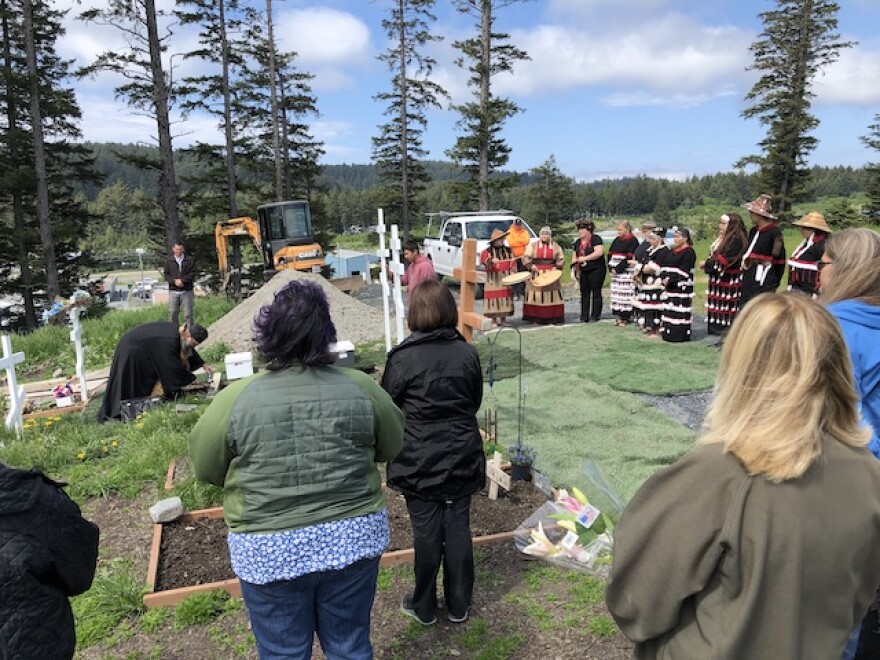The remains of four members of the Alutiiq community came to their final resting places at a cemetery in Kodiak this week. Members of the Sun’aq Tribe and the Alutiiq Museum gathered at Kodiak’s City Cemetery for the burial on June 6. The graveside service was led by the local Russian Orthodox church.
April Counceller is the executive director at the Alutiiq Museum in Kodiak, which coordinated the reburial. She said the homecoming was long overdue.
“There’s a growing awareness that it is not fair or just to hold on to ancestral human remains,” she said.
Of the four individuals laid to rest, one was repatriated from a university collection, and two were returned by the Alaska State Museum. The fourth was found during construction on private land.
The Native American Graves Protection and Repatriation Act, or NAGPRA, which was passed in 1990, was meant to codify the process of returning cultural items — including human remains — from institutions that receive federal funding to the tribes they belong to. But Counceller said it’s been slow going.
The museum has identified the remains of more than 160 Native individuals that have yet to be repatriated to Kodiak — and there’s likely more they’re unaware of. The U.S. Department of the Interior announced last year it was considering changes to NAGPRA to expedite repatriations.
Counceller said the remains of the four buried recently in Kodiak were too old to be identified, but there’s a sense that they’re finally home.
“We consider any ancestral remains to be part of our family,” she said. “And for those individuals who were reburied, I can only think that they may now feel some peace.”
That’s a step in the right direction, according to Counceller, that likely won’t be the last.


